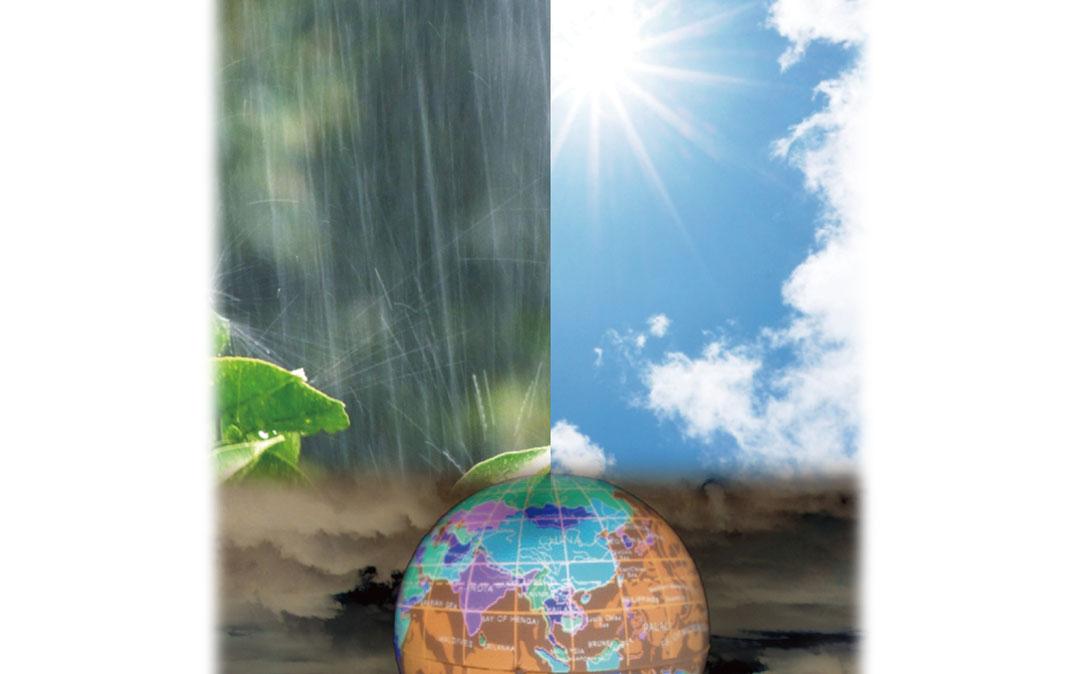Research News
A Warm Indian Ocean Drives Anomalous Weather Events in East Asia

University of Tsukuba researchers apply pressure and atmospheric circulation modeling to identify that warm sea surface temperature conditions in the Indian Ocean were a major factor in the anomalously warm winter and extreme summer rainfall in East Asia in 2019-20
Tsukuba, Japan—An unusually warm winter in 2019/20 in central China and Japan was followed by a summer that saw record-breaking rainfall in the region, triggering severe flooding and landslides. A research team from the University of Tsukuba has now examined the conditions giving rise to these extreme weather events, identifying warm sea surface temperature conditions in the Indian Ocean as a common factor in both events. This finding will be useful in the future prediction of extreme weather patterns in East Asia.
The Meiyu-Baiu rainband is the key driver of the major rainy season in central China and Japan, which generally occurs between June and July. Understanding the factors causing variations in the extent, duration and positioning of this rainband are crucial for the accurate prediction of summer rainfall over East Asia. In early summer 2020, the stagnation of the Meiyu-Baiu rainband caused catastrophic floods in some parts of central China and Japan.
The University of Tsukuba research team observed that the subtropical western Pacific anticyclone was substantially enhanced during this period and continued to supply the rainband with moisture, fueling the continued flooding. "We were particularly interested in identifying the wider mechanisms that lead to these extreme flooding events and used a combination of observational and reanalysis data and state-of-the-art atmospheric modeling," says lead author of the rainfall study, Professor Hiroaki Ueda. "Focusing mainly on conditions in the tropics, we applied a linear baroclinic model to examine the atmospheric response caused by heating. We also used a global coupled atmosphere-ocean model to examine the sensitivity of the atmospheric system to changes in sea surface temperature."
In earlier research, Professor Ueda and colleagues examined the conditions leading to an anomalous warm winter from December 2019 to February 2020 over East Asia, again related to an anomalous anticyclone over Japan. They found clear connections between warming conditions in the tropical Indian Ocean and those in the central Pacific in winter. Likewise, a rise in sea surface temperature in the Indian Ocean was also a factor contributing to the stagnation of the Meiyu-Baiu rainband later in 2020.
"The early summer of 2020 was characterized by transition to La Niña conditions and the continued warming of the Indian Ocean," explains Professor Ueda. "The anomalous subtropical anticyclone extending over the northern Indian Ocean was important in driving moisture toward the Meiyu-Baiu rainband."
The research team found that the set of specific atmospheric and sea surface conditions observed during 2020 resembled those observed in the summer of 1988, which was also accompanied by an unusually wet climate over Japan.
Although the team focused its attention on tropical causes of the prolonged Meiyu-Baiu rainband, there may be other explanations, such as cold air intrusion from higher latitudes. Therefore, many challenges remain for the research community relating to understanding these phenomena in East Asia. Nonetheless, the observation of the influence of a warm Indian Ocean on warming and rainfall conditions in East Asia can contribute to the future forecasting and prediction of extreme weather events in this region.
###
This research was supported by the Industry-University Collaboration Project (HJH02035) of the University of Tsukuba.
Original Paper
The article, "Enhanced subtropical anticyclone over the Indo-Pacific Ocean associated with stagnation of the Meiyu-Baiu rainband during summer, 2020" was published in Scientific Online Letters on the Atmosphere at DOI: 10.2151/sola.17B-002 . The related earlier article, "Anomalous Warm Winter 2019/2020 over East Asia Associated with Trans-basin Indo-Pacific Connections" was published in Scientific Online Letters on the Atmosphere at DOI: 10.2151/sola.17B-001.
Correspondence
Professor Ueda Hiroaki
Faculty of Life and Environmental Sciences, University of Tsukuba




